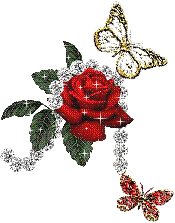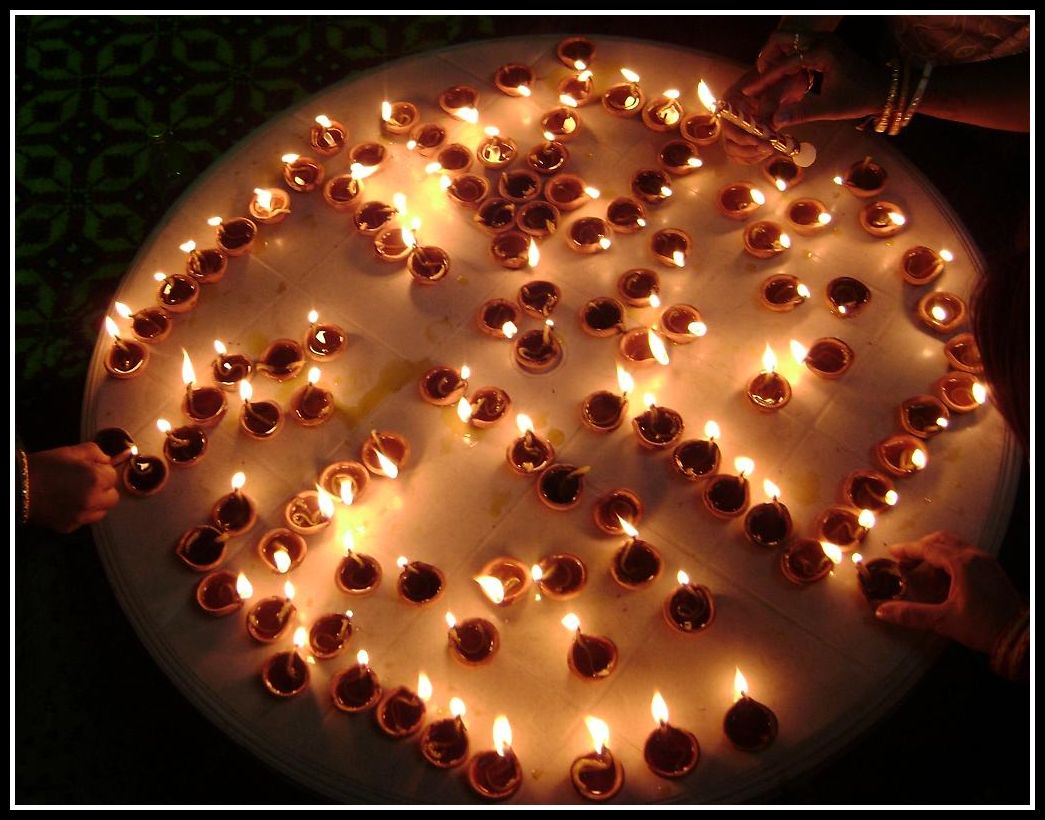![]()
 Bolo ambe mat ki jai
Bolo ambe mat ki jai 
Navratri ( Tamil: ??????????, Malayalam: ????????, Marathi: ????????, Bengali: ????????, Sanskrit: ????????, Kannada:????????) is a Hindu festival of worship and dance. The word Navaratri literally means nine nights in Sanskrit; Nava meaning Nine and Ratri meaning nights. During these nine nights and ten days, nine forms of Shakti/Devi i.e. female divinity are worshipped.
![]()
Significance
The beginning of spring and the beginning of autumn are two very important junctions of climatic and solar influence. These two periods are taken as sacred opportunities for the worship of the Divine Mother. The dates of the festival are determined according to the lunar calendar.
Dasahara, meaning 'ten days', becomes dasara in popular parlance. The Navaratri festival or 'nine day festival' becomes 'ten day festival' with the addition of the last day, Vijayadashami which is its culmination. On all these ten days, the various forms of Mother Mahisasura-mardini (Durga) are worshipped with fervour and devotion.
![]()
Traditions of Navaratri
Bhajan during Navratri Golu in Coimbatore, Tamil Nadu
Devotees lit in West Bengal light to celebrate navratri and durga pujaThere are five Navaratris devoted to the worship of Shakti (Parvati or Durga). Out of these only three are being celebrated now.
1. Sharad Navaratri - This is the most important of the Navratris, and is simply called Navratri or occasionally, Maha Navratri (the Great Navratri). It is celebrated during Sharad (beginning of winter, Sept-Oct). It celebrates the slaying of Mahishasura by the goddess Durga. The festival is observed in most parts of India, particularly in Northern India, Eastern India, and Western India.
2. Vasant Navaratri - This is celebrated during Vasanta Ritu (spring season) (March- April). This Navaratri is celebrated in North India. Vaishno Devi temple in Jammu observes Navaratri during this period.
3. Ashada Navaratri - This Navaratri is particularly important for all Upasakas of Varahi- Celebrated in July-August. This is called Guhya Navaratri in Himachal Pradesh. Varahi is one of the seven Matrikas of Devi Mahatmya.
![]()
Sharad Navaratri
Commences on the first and ends on the tenth day of the bright half of the lunar month Aswayuja/Asvina.
'The Navaratri festival has to be celebrated during the bright fortnight of the month of Asvina, in the order of pratipada, etc, until the navami ends,' says the Dhaumya-vacana.
Vasantha Navaratri
This is celebrated during Vasantha Ruthu (beginning of summer) (March- April). This is also known as Chaitra navaratri as it falls during the lunar month of Chithra.
Forms of Shakti
"The nine forms of Durga" displayed in Benares, Uttar PradeshNine forms of Shakti are worshipped during the Navaratris. The Devis worshipped depend on the tradition of the region.
Durga, the inaccessible one
Bhadrakali
Amba or Jagadamba, Mother of the universe
Annapurna, The one who bestows grains (an) in plenty (purna)
Sarvamangala, The one who gives joy (mangal) to all (sarva)
Bhairavi
Chandika or Chandi
Lalita
Bhavani
Mookambika
![]()
Rituals
Garba dance in Maputo, Mozambique during navratri festivities
Display of the Navratri Golu depicting various forms of Durga in Tamil NaduThe Navratri commences on the first day (pratipada) of the bright fortnight of the lunar month of Ashwin. The festival is celebrated for nine nights once every year during the beginning of October, although as the dates of the festival are determined according to the lunar calendar, the festival may be held for a day more or a day less.
Navaratri is celebrated in different ways throughout India. In North India, all three Navratris are celebrated with much fervor by fasting on all nine days and worshipping the Mother Goddess in her different forms. The Chaitra Navratri culmintes in Ram Navami and the Sharad Navratri culminates in Durga Puja and Dussehra. The Dussehra of Kulu in Himachal Pradesh is particularly famous in the North.
The last four days of Sharad Navratri take on a particularly dramatic form in the state of West Bengal in East India where they are celebrated as Durga Puja. This is the biggest festival of the year in this state. Exquisitely crafted and decorated life-size clay idols of the Goddess Durga depicting her slaying the demon Mahisasura are set up in temples and other places. These idols are then worshipped for five days and immersed in the river on the fifth day.
In Western India, particularly in the state of Gujarat, Navratri is celebrated with the famous Garba dance. It is also popular throughout India and among Indian communities around the world including UK and USA.
In south India, people set up steps and place idols on them.This is known as golu.
Navratri is divided into sets of three days to adore three different aspects of the supreme goddess or goddesses.
![]()
First three days
The goddess is separated as a spiritual force called Durga also known as Kali in order to destroy all our impurities.
![]()
Second three days
The Mother is adored as a giver of spiritual wealth, Lakshmi, who is considered to have the power of bestowing on her devotees inexhaustible wealth, as she is the goddess of wealth.
![]()
Final three days
The final set of three days is spent in worshipping the goddess of wisdom, Sarasvati. In order to have all-round success in life, believers seek the blessings of all three aspects of the divine femininity, hence the nine nights of worship.
In South India, Sarasvati pooja is performed on the 7th day. Eight day is traditionally Durgashtami which is big in Bengal. The 9th day is Ayudha Pooja when everyone gives their tools of the trade -- pens, machinery, books, automobiles, school work, etc. a rest and ritually worships them. They start a fresh from the next day, the 10th day which is considered as 'Vijaya Dashami'. Many teachers/Schools in south India start teaching Kindergarten children from that day onwards. Students also pay homage to their respective teachers as they are considered the third god (Maathaa, Pitha, Guru, Daivam - Mother, Father, Teacher & God). On this tenth day of Navratri in October - the holiday of Dussehra or Dasara, an effigy of Ravana is burnt to celebrate the victory of good (Rama) over evil.
During Navratri, some devotees of Durga observe a fast and prayers are offered for the protection of health and prosperity. A period of introspection and purification, Navratri is traditionally an auspicious and religious time for starting new ventures.
During this vowed religious observance, a pot is installed (ghatasthapana) at a sanctified place at home. A lamp is kept lit in the pot for nine days. The pot symbolizes the universe. The uninterrupted lit lamp is the medium through which we worship the effulgent Adishakti, i.e. Sree Durgadevi. During Navratri, the principle of Sree Durgadevi is more active in the atmosphere.
Navratri is celebrated in a large number of Indian communities. The mother goddess is said to appear in 9 forms, and each one is worshipped for a day. These nine forms signify various traits that the goddess influences us with. The Devi Mahatmya and other texts invoking the Goddess who vanquished demons are cited.
During the eight or ninth day, Kanya Poojan, where virgin girls who have not attained puberty are worshipped, occurs.
![]()
![]()
![]()
![]()

![]()
JAI MATA DI

































